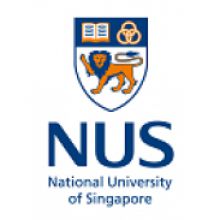Students will be able to acquire top-shelf business qualifications while undertaking doctoral studies under an initiative to bridge the gap between Australia’s academic and commercial worlds.
Flinders University says its concurrent PhD and MBA programme, based on similar models in the northern hemisphere, is a national first that allows students to obtain both credentials inside four years.
“We realised that nothing like this was really offered in Australia,” said MBA director Carla Dias Wadewitz. “The PhD students [were telling us] that they needed to upskill themselves with business, leadership and financial-management skills because to manage grants, you need to manage people, you need to manage numbers, you need to have a marketing approach.
“A lot of these researchers want to start their own businesses. The MBA skills [allow] them to take their discoveries from their PhD to the market. [That] is something that really appeals to them.”
Available from next year, the programme includes 18 months’ worth of MBA studies squeezed into 12. Students take one MBA unit a year for the first three years and nine in the fourth year, when they have hopefully dispensed with their doctoral studies.
Ms Dias Wadewitz said the programme was not confined to doctorates in medical or life sciences. “It can be art, it can be geography, it can be in nanotechnology. Our combined programme is offered across all of our colleges.”
Joint PhD-MBA programmes were pioneered in the US, with the first example emerging more than 20 years ago at Wake Forest University in North Carolina. Ms Dias Wadewitz said that Flinders’ model was “closely aligned” with combined offerings at Yale, Delaware, Dartmouth, Miami and Cornell universities in the US, along with Sorbonne University in Paris, the Hebrew University of Jerusalem and the National University of Singapore.
She said overseas experience was that enrolments grew “exponentially” in the first years of the joint offerings, proving popular with students and businesses alike. “Employers have said: ‘This is exactly the profile of graduate we are looking for.’ They keep asking the universities for the PhD-MBA graduates.”
Standalone PhDs sometimes produce “brilliant scientists who can’t put a business case together or struggle in managing a project or the people around them”, she said.
Ms Dias Wadewitz said that while an accelerated combined programme appealed to those who wanted their credentials in a rush, “it’s not for everybody”, with many people content to accept education as “part of their life”.
“Technology is changing so fast that what we learned last year may be already outdated. [Many] students love the opportunity of continuing to study after work, and they’re not really worried about how long it’s going to take them. It’s actually better sometimes for their finances – you still have your income coming in and your normal life happening.”






